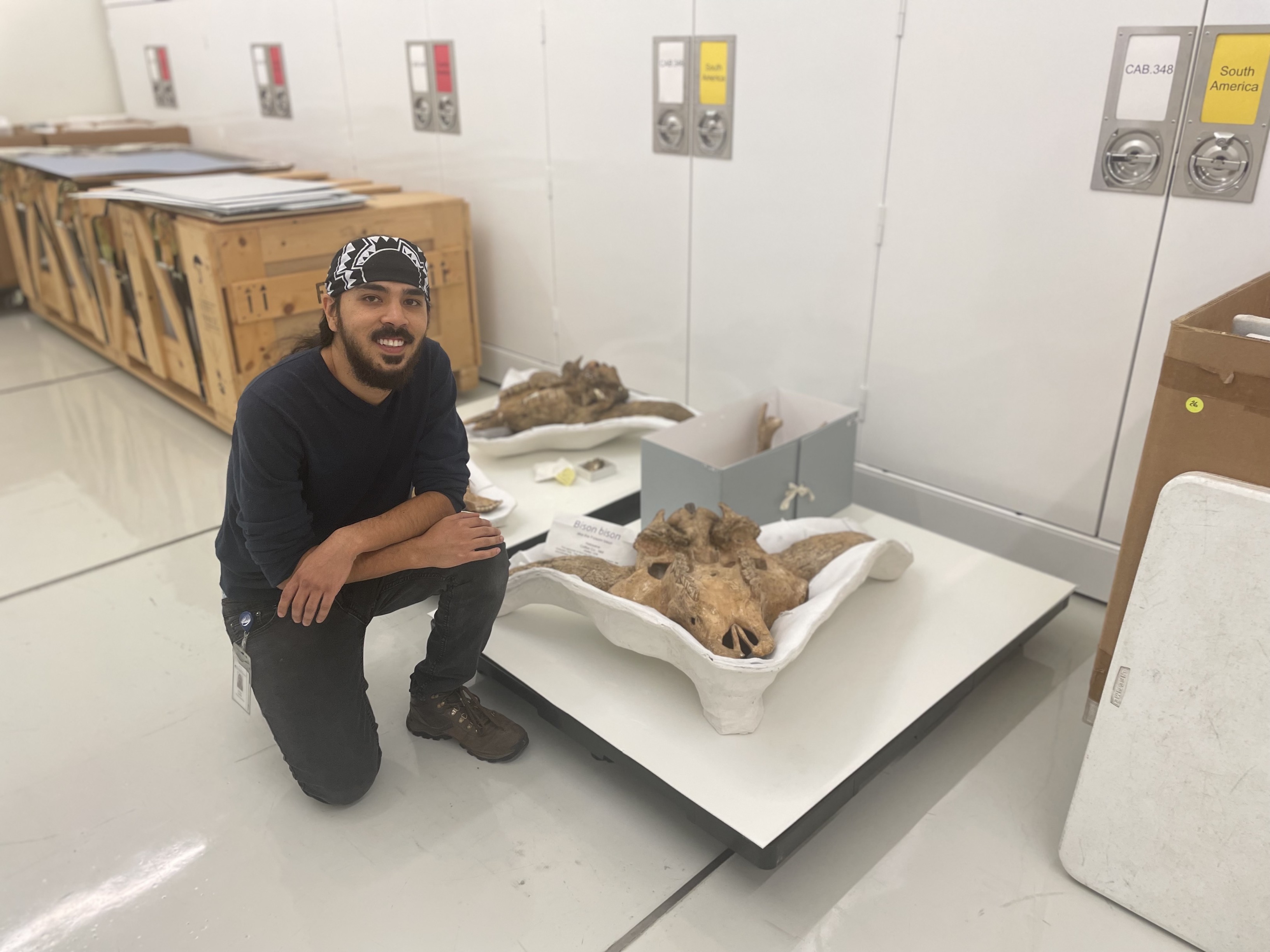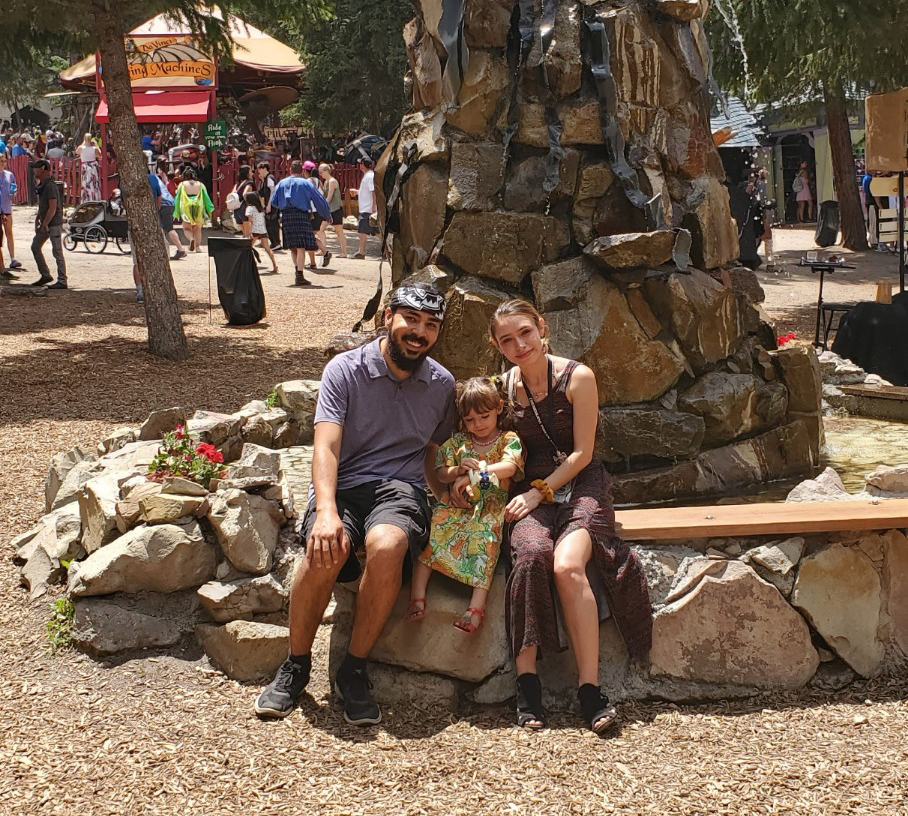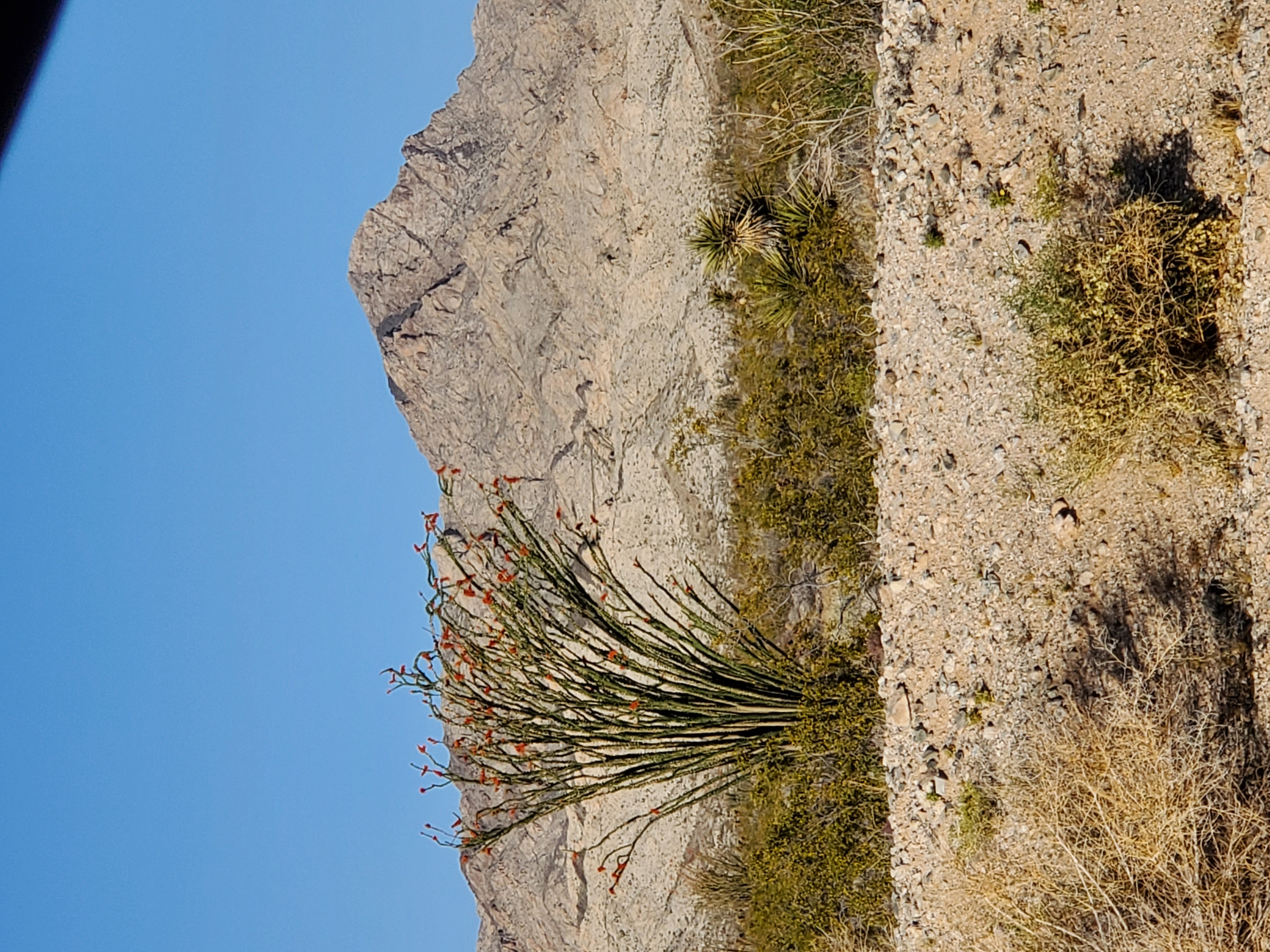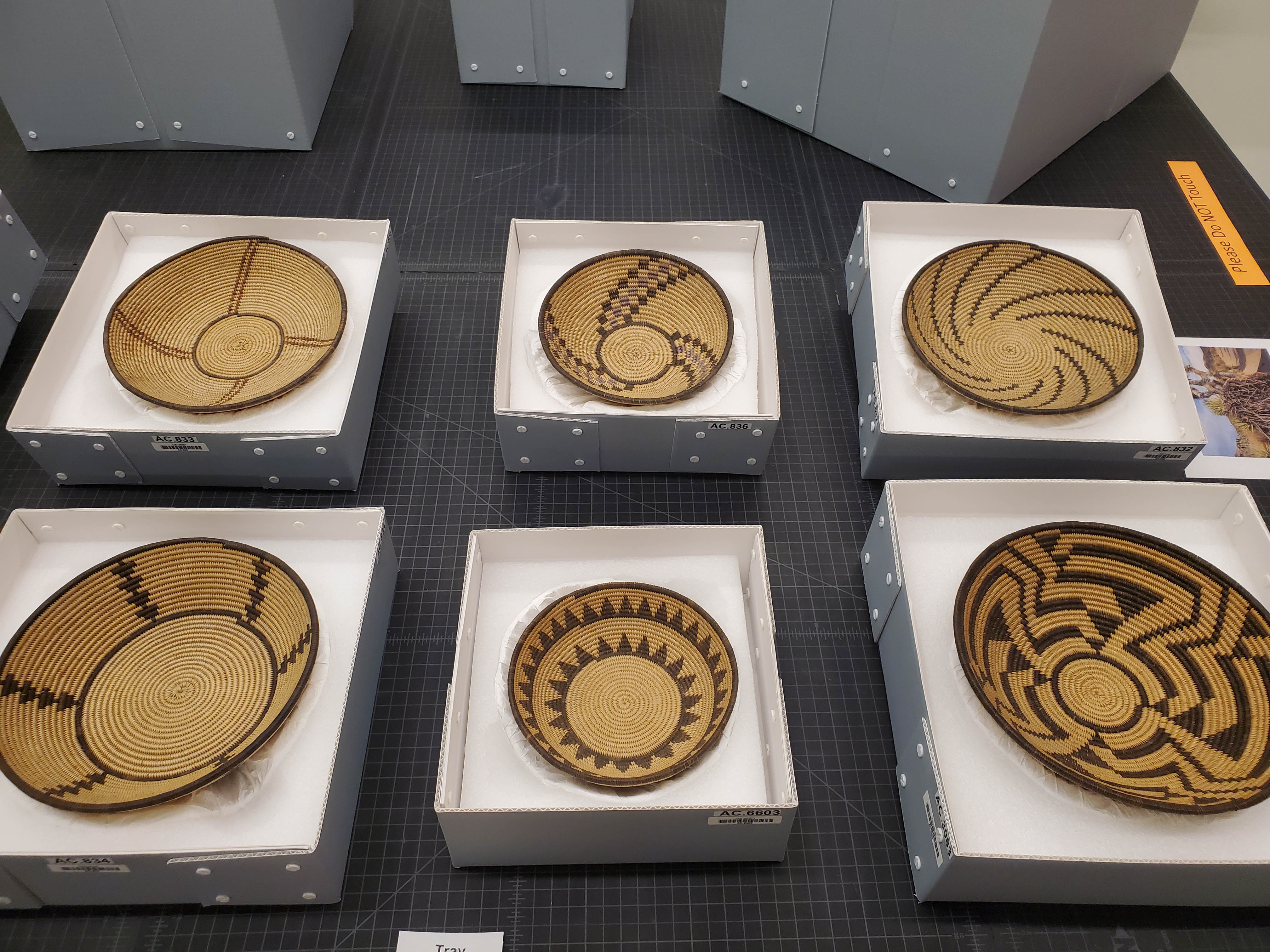
Today marks the beginning of Native American Heritage Month, a month that honors and celebrates the history, culture and contributions of Native Americans, Alaskan Natives and Indigenous peoples across America. In recognition, we'd like to spotlight one of the many narratives that underscore the vital contributions from those of Native American Heritage to our Museum.
Johnny Gordon is Collections Assistant in the Anthropology Collections department at the Denver Museum of Nature & Science. In his role, he integrates his Indigenous identity into his work, providing invaluable cultural understanding and insights.
Today, we converse with him about his journey and his reflections on Native American Heritage Month.
What do you do in the Museum?
I work as a Collections Assistant in the Anthropology Collections department at the Denver Museum of Nature & Science. I am responsible for the reorganization and rehousing of multiple collections held in trust by the Museum, both ethnographic and archaeological, particularly the epochal Folsom and Dent archaeological sites. I also assist in processing new acquisitions, meaning newly donated or curated objects to be preserved in Anthropology collections. Another significant part of my work, which I find the most fulfilling, is participating in Native American Graves Protection and Repatriation Act (NAGPRA) consultations on behalf of the Museum. We facilitate visits from descendant communities to receive instruction on the traditional observances affiliated with preserving and understanding their unique cultural heritage and to repatriate or return objects in question upon request or through our legal obligation.

Johnny, his partner, Jimmie and three-year-old daughter Adelaide at the Renaissance Festival in Larkspur, Colorado. (Credit/Johnny Gordon)
Can you share a bit about your Indigenous identity, and what Native American Heritage Month means to you personally?
I am a member of the Chemehuevi Band of Southern Paiute. Traditionally, we refer to ourselves as Nuwuvi/Nuwu. The terms are interchangeable and essentially translate into “the special people” or “the family;” the terms are often condensed to “the people.” Nuwuvi/Nuwu are wholly nomadic; the ancestral lands of our 15 bands, respectfully, span across southern Utah, Nevada, California and northern Arizona. My father was born in Las Vegas, Nevada, where he grew up on the Las Vegas Paiute Colony. My mother was born in Pahokee, Florida later to be raised in Parker, Arizona after my grandmother, having been a ward of the adoption system, returned to the Colorado River Indian Tribes (CRIT) reservation, reuniting with our family. Both are enrolled in the Chemehuevi Indian Tribe; the reservation was established in 1907, located in Chemehuevi Valley. In our dialect, the valley is known as Si-wa-vaats: “Place of Mortars.”
To me, Native American Heritage Month is primarily a recognition of the deeper history of strife and adversity experienced by countless cultures throughout this nation and how we have endured despite systematic genocide. In the United States, I think on the history of my people and family trying to adapt to a society that rejected our values. My paternal great-grandmother was the first to be regulated to boarding school at the Fort Mojave reservation after her family was removed from Ivanpah (Piute Range Mountains, California) and forcibly relocated to Chemehuevi Valley, only later to be confined at Sherman Indian School in Riverside, California. My grandmother, her daughter, was compelled to Stewart Indian School in Carson City, Nevada, where she fled back to Las Vegas to escape abuse at 15.

View of Chemehuevi Mountain (Kaw-tong) in the Mojave Desert. (Credit/ Johnny Gordon)
An elder invited my father and me to visit the Piute Range area where he shared the story of his grandfather, which I'll paraphrase. His grandfather inquired to the U.S. officials why his family couldn't remain in the desert – now known as the “Mojave Desert” – as they had for countless generations, an area directly linked to the ancestral hunting-clan songs of their family. He was told by federal officials they did not have the same status of U.S. citizens and therefore didn't qualify for an allotment under the Homestead Act. So, like my father’s family, they were exiled to the reservation.
How has being a person of Native American heritage impacted your work at the Museum?
Working in the Museum’s anthropology department has afforded me many opportunities to share my people’s culture with colleagues and the public. I’ve also had the fortune to receive insight into other Indigenous cultures by way of their elders and knowledge bearers. However, the most impactful aspect has been the unequivocal support of my coworkers in regard to how my people traditionally interact with sacred or culturally sensitive objects, in general.
As someone who works in the Museum, how do you think our anthropology collections can help support and educate the public about Native American cultures?
Those of us specializing in anthropological collections walk a fine line between educating the public on one hand but also recognizing the concerns of the original communities on the other. The closure of the North American Indian Cultures Hall presents the Museum with an auspicious opportunity to curate a space decisively informed by Indigenous people, where their lifeways can be freely shared with Museum patrons.

Chemehuevi baskets, most well-known material culture, woven with gooddings or coyote willow (yellow) and devil’s claw (black). (Credit/Johnny Gordon)
What efforts are being made to ensure that Indigenous material culture and histories are presented and cared for with accuracy, respect and context within the Museum?
Our collections represent a vast assortment of tangible and intangible cultural heritage. This can be seen in our “Northwest Coast Collection: Building Bridges and Detailed Conservation Survey” Institute of Museum and Library Services grant managed by our conservator colleagues in the Avenir Conservation Center who work with our department to assist visiting northwest coastal tribal delegations from Canada. The ethos is to empower these communities to determine the contextual understanding of their distinct material culture, ritual practices and histories.
What is one thing you’d like the Museum community to learn about for Native American Heritage Month?
The one thing I would like for the Museum community to understand about Native American Heritage Month is to acknowledge the iniquities our discipline has perpetuated since its inception. Left to us is the task of addressing the unresolved historical traumas our profession imposes and how we can reconcile in a manner befitting our strive to improve museum practices while also respecting descendant communities’ cultural values.




